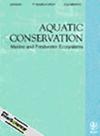Insights into the Phylogeography and Demographic History of the Native and Invasive Amphidromous Prawns of Hawai'i
Abstract
The Hawaiian archipelago is home to two species of amphidromous prawn in the genus Macrobrachium. Macrobrachium grandimanus is native to Hawai'i, whereas Macrobrachium lar was intentionally introduced in the mid-20th century and has since become established in similar habitats as M. grandimanus. This investigation sought to generate insights into the phylogeography of these two species, which are poorly understood in their Hawaiian range. Data from the mitochondrial COI gene from six collecting sites on four of the main Hawaiian Islands suggest high connectivity among M. grandimanus populations and indicate a possible population expansion characteristic of colonization of remote islands. The data also support a clear separation of the Hawai'i M. grandimanus from populations outside Hawai'i. For M. lar, COI data from five collecting sites on three of the main Hawaiian Islands revealed only three haplotypes, which showed a phylogenetic affiliation to populations in the North Pacific region of the species' native range. In sum, these new insights on population connectivity and phylogenetic affiliations provide relevant information that can assist conservation efforts of the native species M. grandimanus in Hawai'i and suggest that M. grandimanus should be managed as an endemic species. Competition between the two species may place populations of M. grandimanus at risk of decline or habitat shift.

 求助内容:
求助内容: 应助结果提醒方式:
应助结果提醒方式:


